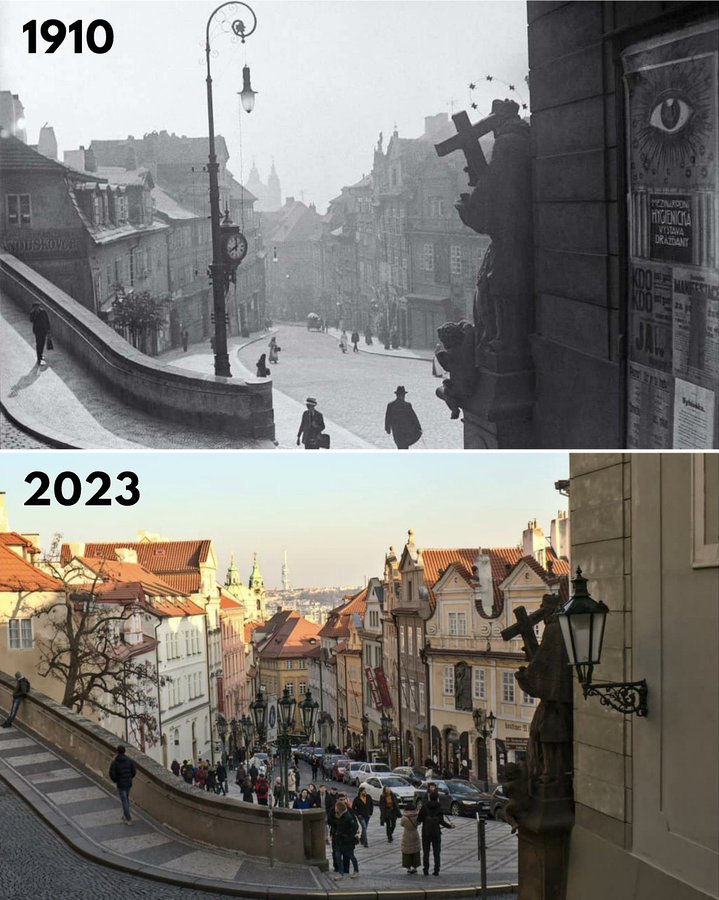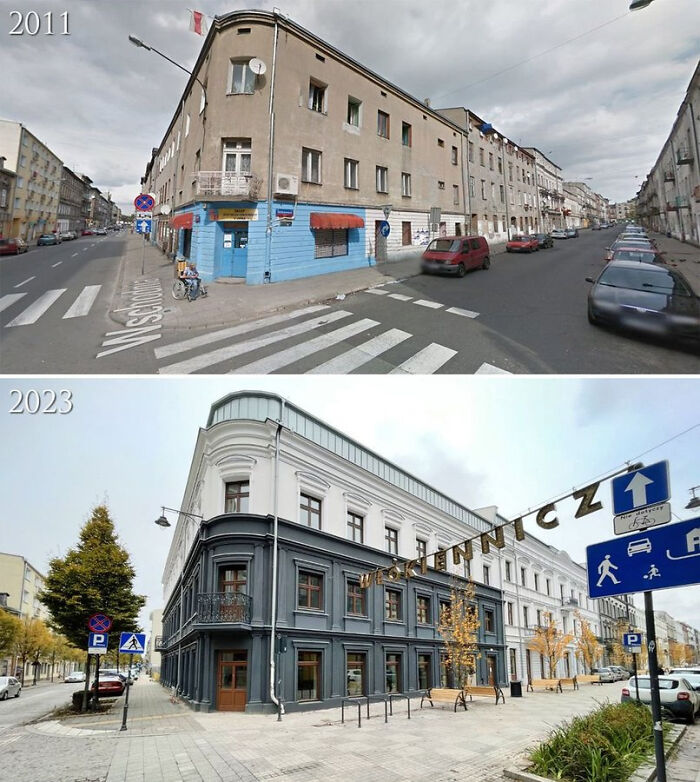Growth
| Lecture handout: Growth* |
⭐ Required readings:
- Krugman, P., 1994, The Myth of Asia’s Miracle. Foreign Affairs, 73(6), 62–78
- Cowen, T., “The Case for the Longer Term“, Cato Unbound, January 9th 2019
Watch: Growth is like an iPhone
Here is an example of Prague’s enduring beauty. But rather than look at this image and think about preservation of the status quo, I look at it and think of the amazing growth that transformed it from a hamlet to the city shown in 1910. Indeed, any historic and enduring beauty is testimony to previous growth and ambition.
 In some places, such as Lodz, aesthetic streets are about returning to past beauty. This just shows that the destruction of growth is a terrible thing, and we should appreciate its manifestation where we have it.
In some places, such as Lodz, aesthetic streets are about returning to past beauty. This just shows that the destruction of growth is a terrible thing, and we should appreciate its manifestation where we have it.

This video by Ollie Bye shows the evolution of the largest cities in the world (by population).
You can test your knowledge of it with this short quiz.
| Activity: Largest cities |
| Activity: Growth activity |
| Activity: Free Markets in Chile |
| Activity: Economic Freedom Parlour Game |
You can read my essay that summarises the key points from this session here:
- An Economics Mission Statement, Medium, March 2018
Here is my video using the iPhone analogy:
I go deeper with this framework with my Country Competitiveness Dashboard.
Recommended podcasts
-
Brad DeLong on Intellectual and Technical Progress (Ep. 172), Conversations with Tyler, February 22nd, 2023
️ Recommended article
- Jones, C., 2015, ‘The Facts of Economic Growth‘ – an encyclopedic account of the main facts about growth
Recommended books
- Koyoma, M., and Rubin, J., 2022, How the world became rich: The historical origins of economic growth, Wiley – Mark and Jared survey the main explanations for economic growth, including geography, institutions, culture and exploitation, with a focus on why the Industrial Revolution occurred in England and how it then spread to other countries across the world.
- De Long, B., 2022, Slouching towards utopia, Basic books – this is a large tome and covers a lot of ground, but is empirical, readable, and an important work.
Recommended videos:
- Is Economic Growth a Moral Imperative? Lecture by Tyler Cowen, (which is based on his book, Stubborn Attachments).
Plunder
The lecture talks about how countries get rich. One strategy that isn’t mentioned is plunder. The main reason for this is that colonial exploitation and other forms of resource extraction can undoubtedly harm some groups, and benefit others, but overall there is no obvious reason why this would create wealth. Theft is at best a zero-sum transfer, whereas particularly since 1870 we’ve seen vast swathes of the global population getting richer.
For more on this see:
- “Nations don’t get rich by plundering other nations,” by Noah Smith. Noahpinion, December 17, 2023.
Or listen to this podcast:
- Can a Nation Plunder Its Way to Wealth (with Noah Smith). EconTalk, Jan 24th 2024
The Solow model
The foundational growth model is the Solow Model. Marginal Revolution have a series of excellent videos, starting here:
But I’m a Solow skeptic!

Recommended movie:
- Saltburn (2023) – are we supposed to believe that Oliver “wins”? Or just project into the future with him like Miss Havisham, sitting amidst wreck and ruin because he has no income and can’t afford the upkeep? When I watched it I assumed he’d inherited Saltburn (hence the title) because if he’d inherited the entire family fortune, he wouldn’t be in the house all alone.
| Learning Objectives: Understand the foundations of economic growth. See how economic growth theories inform development economics.
Cutting edge theory: This session defines cutting edge growth Focus on diversity: One of the most widely respected economic historians of the factors that led to industrialisation is Deidre McCloskey Spotlight on sustainability: This session defines the sustainable growth rate as the balanced path between capital accumulation and capital consumption. |